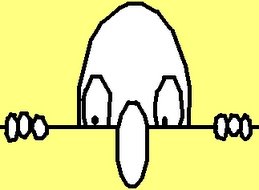Author Frederick E. Smith, was a veteran of the cycle of novel
to film and vice versa after his own “633 Squadron” turned into a film several
years before he was asked to write this novelized version of the script for the
epic film “Waterloo” about the battle fought by Napoleon against the Duke of
Wellington’s army and the Prussians under Marshal Blucher. The film was a major release in 1970, a joint
Italy/USSR production directed by Sergei Bondarchuk, whose previous film hand
been the almost eight hour long 1966 “War and Peace” (1966). (I once saw this shown in 16mm format on a
series of 10 minutes reels!). Like that previous
film,”Waterloo” was shot on location in the Soviet Union with thousands of
Soviet Army personnel as extras to recreate the sweeping battle scenes.
There are persistent rumors of a four hour long Russian
language version of the film, but I suspect that that was the rough cut version
that was then edited down to the final release version. During four years living in Moscow, I was
never able to find any recorded version (VHS or DVD) that was other than a
Russian version of the regular release.
Nor could I find reference to a 4 hour long version in any of the
Russian language film catalogs I was able to access.
I read this novel very much as ‘the shooting script’ for the
film and looked especially for elements that were consistent with or not
consistent with the released version of the movie. The narrative arc of this fictionalized
battle is reasonably close to history, with only minor touches of Victor Hugo
or Tolstoy inserted here and there probably as dramatic flourishes. I preferred the Napoleon presented in these
pages to Rod Steiger’s Napoleon in the film.
I don’t know whether the differences arose from the actor or the
director’s interpretation, but this novel’s Napoleon matches up better with my
conception of the historical Emperor I know from decades of reading and study.
The other characters in the book also follow the film’s lead
as they consolidate historical characters into one film personage or attribute historical
dialogue from one character to a different film character. Another difference between page and screen are
the Duke’s interactions with the 27th Inniskilling Fusiliers (a
favorite regiment of mine) – and in my opinion the film’s version successfully
‘improves’ on the novel’s account for entertainment purposes. The book includes an expansive list of the cast
and crew involved in making the film.
The research done for the film also inspired another book by
the film’s Costume Designer Ugo Percoli
and Michael Glover, “1815, The Armies at Waterloo” which presented a history of
the battle and pages of color plates and drawings of how they were believed to
have appeared at the battle. Frederick
Smith acknowledged “his debt” to a list of ten then significant works
addressing Napoleon’s life, the ‘hundred days’ campaign leading up to the
Battle of Waterloo, and his principal opponent the Duke of Wellington. These include “Napoleon” by Felix Markham
(which I’ve also read and reviewed), David Howard’s [sic] “A Near-Run Thing” – which
I’ve also read and enjoyed. The cited works
cited were, in 1970, among the standard works on the subject. However, they and thus Smith’s work here has
been overtaken by subsequent research and scholarship.
I do recommend this book, especially if you are a fan of the
film and interested in the insights it might give into the process of translating
words into screen images. Until someone
writes a history of how this movie came to be made, this book plus Percoli’s, are
the nearest thing.

